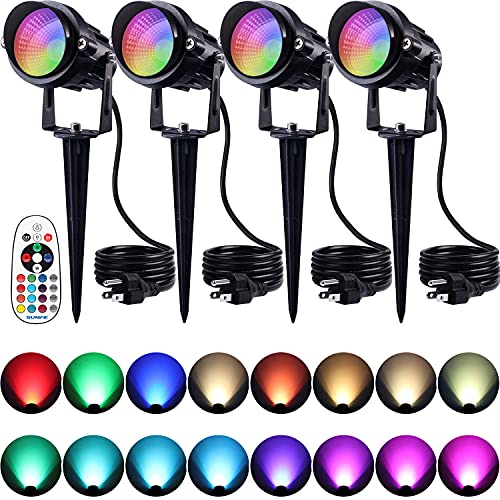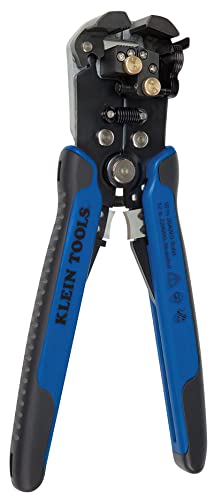In this step-by-step guide, I will walk you through the process of installing LED spotlights. LED spotlights are a great choice for energy-efficient lighting. Whether you’re updating your current lighting or adding new spotlights, this guide has you covered with easy-to-follow instructions. Get ready to brighten up your space with stylish and long-lasting LED spotlights!
Popular LED Spotlights in High Demand
Gather the necessary tools and materials
Before you start installing the LED spotlights, ensure that you have gathered all the essential tools and materials. To complete the installation process smoothly, you will need the following items: LED spotlights, a screwdriver, wire strippers, wire connectors, electrical tape, and if necessary, a ladder.
To begin, first check if you have all the required tools and materials. Make sure you have enough LED spotlights for the area you plan to illuminate. Additionally, have a screwdriver handy as you will need it during the installation process. To connect the wires, you will also need wire strippers and wire connectors. It is essential to ensure a secure connection, so electrical tape will come in handy when wrapping the connectors. Finally, if the installation requires working at heights, having a ladder available will ensure your safety.
By gathering all the necessary tools and materials beforehand, you will be fully prepared for the installation process. This will save you time and make the overall experience smoother. Enjoy the process and the end result of your well-lit space!
Turn off the power
Safety is paramount when working with electrical installations. To ensure a secure environment, the first step is to locate the circuit breaker that controls the specific area where you will be installing the LED spotlights. To begin, carefully search for the circuit breaker panel in your home or workspace. It is usually located in a utility room, basement, or garage. Once you have located it, open the panel by removing the cover. Inside, you will find a series of switches or breakers labeled with different areas or rooms. Look for the specific breaker that controls the power to the area where you will be working. It may be labeled with the name of the room or area, or it could simply be numbered. Once you have identified the correct breaker, gently push the switch or lever to the “off” position. This action will cut off the power to the area and ensure that there is no risk of electrical accidents or shocks during the installation process. Remember to exercise caution and double-check that the power is indeed off before proceeding with any electrical work.
Plan the layout
Take a moment to carefully plan how you want to position your LED spotlights. Start by deciding where you want them to be placed in your space. Consider whether you want them to illuminate a specific area, highlight an object, or provide general ambient lighting.
Next, think about the spacing between each spotlight. For example, if you have a long hallway, you might want to place the spotlights at equal intervals to create a consistent and evenly lit pathway. On the other hand, if you are placing them above a kitchen countertop, you might want to group them closer together to ensure sufficient lighting for cooking.
Lastly, consider the direction of the light emitted by the spotlights. Do you want the light to be focused downwards, upwards, or at an angle? Take into account the specific requirements of your space and the desired effect you want to achieve.
By taking the time to plan your layout, you can ensure that your LED spotlights provide optimal illumination for your space. Remember to consider placement, spacing, and light direction for an even distribution of light.
Remove the existing fixtures
To remove the existing fixtures and replace them with LED spotlights, follow these simple steps:
- Step 1: Turn off the power supply to the fixtures at the circuit breaker to ensure safety.
- Step 2: Carefully remove any screws or fasteners holding the old fixtures in place.
- Step 3: Gently disconnect the electrical wiring from the fixtures, making sure to note the color-coded wires and their corresponding connections.
- Step 4: Take note of how the old fixtures were installed, including any mounting brackets or additional support they may have had.
- Step 5: Once the old fixtures are completely detached, set them aside for proper disposal or recycling.
- Step 6: Clean the area where the fixtures were removed, making sure it is free from any debris or dust.
- Step 7: Now, you are ready to install the new LED spotlights following the manufacturer’s instructions. Having noted the previous installation process will greatly assist you in this step.
By carefully and methodically removing the old fixtures, you can ensure a smooth installation process for your new LED spotlights.
Connect the wiring
When connecting the wiring for your LED spotlights, it is important to carefully follow the manufacturer’s instructions. Begin by stripping the ends of the wires, ensuring you expose enough of the bare wire to make secure connections. Next, identify the corresponding wires in the electrical box and connect them to the stripped ends of the spotlight wires. Make sure to match the positive (+) and negative (-) terminals correctly.
To ensure a secure connection, use wire connectors to join the wires together. These connectors will help prevent any loose connections that could lead to electrical issues later on. Once all the connections are made, double-check each one to ensure they are tight and secure.
Remember, it’s always important to prioritize safety when working with electricity. If you are unsure or uncomfortable with any part of the wiring process, it is recommended to consult a professional electrician.
Mount the LED spotlights
Securely attach the LED spotlights to the desired locations using the provided mounting hardware. Start by identifying the locations where you want to install the spotlights. For example, if you want to illuminate your garden path, choose suitable spots along the path. Next, check the manufacturer’s instructions to determine the mounting method specified for your spotlights.
If drilling holes is required, grab a drill with the appropriate size drill bit. Gently drill the holes into the designated spots, being careful not to damage any existing wiring or structures. Now, take the mounting brackets and place them over the holes, aligning them properly. Make sure to use the provided screws to secure the mounting brackets tightly into place.
If the manufacturer suggests an alternative mounting method, such as adhesive tape, follow their instructions accordingly. Ensure that the spotlights are positioned correctly for optimal brightness and coverage, and securely attach them using the recommended method.
Remember to check that all the spotlights are properly fastened before fully testing them. By following these simple steps, you will have your LED spotlights securely mounted and ready to brighten up your space.
Test and adjust
To ensure proper installation and lighting functionality, it is crucial to test and adjust the spotlights after they have been installed. Once you have connected all the spotlights and turned the power back on, it’s time to test the lights. Look for any flickering or uneven illumination by observing the illumination pattern carefully.
If you notice any flickering or unevenness, it is necessary to make some adjustments. Start by checking the position of the spotlights. You may need to reposition them to achieve the desired lighting effect. To do this, loosen the screws or clips that hold the spotlights in place and gently move them in the desired direction. Once you have adjusted their position, tighten the screws or clips to secure them.
After making these adjustments, retest the lights to see if the flickering or uneven illumination has been resolved. Continue this process of adjusting and retesting until you are satisfied with the lighting effect. By thoroughly testing and adjusting the spotlights, you can ensure that the illumination is even and flicker-free, enhancing the overall ambiance and functionality of your lighting setup.
Enjoy your new lighting!
In conclusion, I hope this blog post has been helpful in guiding you through the installation process of LED spotlights. By prioritizing safety, planning the layout, and ensuring proper wiring connection, you can effortlessly bring energy-efficient and long-lasting illumination into your space. Remember, with the right tools and materials, you’ll be able to enjoy the many benefits that LED spotlights have to offer. Happy installing!
Necessary Equipment
Illuminate with LEDs!
Step-by-Step Guide to Harnessing the Power of LED Spotlights
- Choose the right LED spotlight: Look for one that suits your specific needs, whether it’s for general lighting or highlighting certain areas or objects. Consider factors like brightness, color temperature, and beam angle
- Install the spotlight correctly: Carefully read the manufacturer’s instructions and make sure to follow them to ensure proper installation. If you’re unsure, consider hiring a professional to do it for you
- Positioning matters: Determine the best placement for your LED spotlights. Experiment with different angles and heights to achieve the desired lighting effect. For accent lighting, aim the spotlight at the desired object while avoiding glare
- Use the appropriate power source: LEDs are energy-efficient, so opt for compatible power sources like LED drivers or transformers for optimum performance. Ensure that the voltage and wattage of the spotlight match the power source to prevent any issues
- Maintain your LED spotlights: Keep the spotlights clean and free from dust to maintain their performance and longevity. Regularly inspect the wiring and connections for any signs of wear and tear, and replace any damaged parts promptly
- Remember, these are just a few basic tips to get started. If you have any specific questions or concerns about using LED spotlights, feel free to ask, and I’ll be happy to assist you further!


















